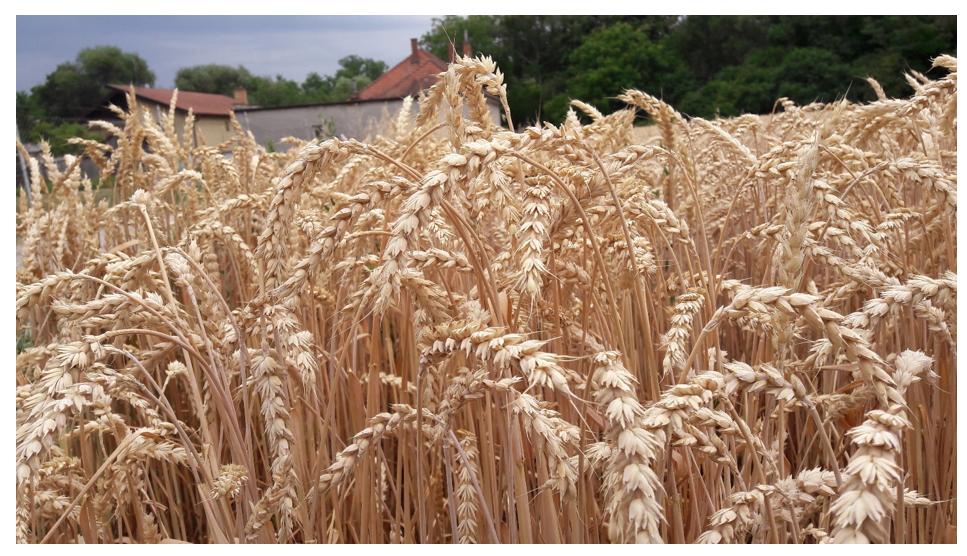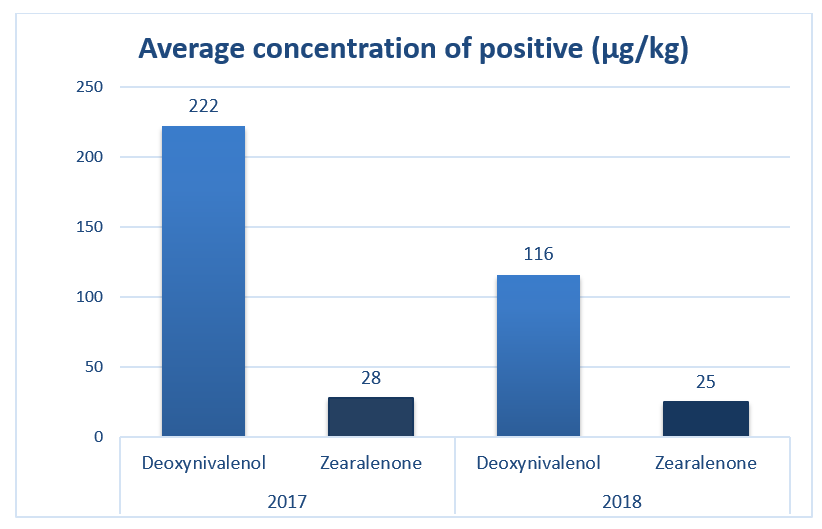



NutriAd Poland 2018: Survey of mycotoxins in wheat
Mycotoxins are secondary metabolites produced by microfungi that are capable of causing disease and death in humans and other animals.Author: Radka Borutova; Business development manager at NutriAd International
Because of their pharmacological activity, some mycotoxins or mycotoxin derivatives have found use as antibiotics, growth promoters, and other kinds of drugs; still others have been implicated as chemical warfare agents (Bennett and Klich, 2003).
Picture 1 - Wheat harvested in Central Europe 2018
©Copyright: Radka Borutova, NutriAd International
The 2018 NutriAd mycotoxin survey included 66 wheat samples from across Poland. The survey provided insight into the incidence of aflatoxin B1 (AfB1), zearalenone (ZEN), deoxynivalenol (DON), T-2 toxin/HT-2 toxin, fumonisin B1 (FB1), fumonisin B2 (FB2) and ochratoxin A (OTA). The wheat samples were collected directly from farms or animal feed production sites. Sample providers were advised to follow the principles of good sampling (Richard, 2000). Analytical personnel and laboratory staff were not involved and therefore did not influence the sampling process at any stage.
All 66 samples were collected almost immediately after harvesting, so the probability of storage mycotoxins (OTA) developing was low. More than 460 analyses were conducted to test for the occurrence of the 7 mycotoxins most frequently found in agricultural commodities intended for animal production. All 7 mycotoxins were analyzed by liquid chromatography tandem mass spectrometry (LC MS/MS). For the purpose of data analysis, non-detection levels were based on the limits of quantification (LOQ) of the test method for each mycotoxin: AfB1 <1 μg/kg; ZEN <15 μg/kg; DON <50 μg/kg; FB1 <20 μg/kg; FB2 <20 μg/kg; OTA <1 μg/kg; T-2/HT-2 toxin <10 μg/kg.
Results
The results showed that 38% of the wheat samples were contaminated with DON. Only 1,5 % of samples contained ZEN, an unexpectedly low level of contamination. The average concentrations of the recovered mycotoxins were low. The highest concentration of DON found in one of the samples was 247 μg/kg. As expected, the results showed that 1.5% of wheat samples were contaminated with OTA and the highest concentration found in a single sample was 12 μg/kg. The results also showed that 5% of samples were contaminated with T-2/HT-2 toxin and the highest concentration reached 56.6 μg/kg. None of the samples contained AfB1, FB1 and FB2.
Table 1 – Mycotoxin contamination of wheat in Poland
The levels of DON and ZEN contamination in wheat in 2018 were much lower than in 2017 and 2016 (Table 2). However, the average concentration of samples contaminated with DON and ZEN was comparable with 2017 (Figure 1 and Table 2). In 2016, slightly more mycotoxins were detected (DON, ZEN, T-2/HT-2 and FB2) compared to 2018 where only 4 mycotoxin types (DON, ZEN, T-2/HT-2 and OTA) were detected.
Figure 1 – Comparison between average concentration of positive samples µg/kg (DON and ZEN) in 2017 and 2018
Table 2 – Comparison of mycotoxin contamination of wheat in Poland in 2016, 2017 and 2018
Conclusion
The NutriAd 2018 mycotoxin survey in Poland concluded that the wheat harvest was of good quality in terms of mycotoxin contamination. This is an improvement when compared to the previous year’s harvest. Based on the results of the survey conducted immediately after the 2018 wheat harvest, whilst the quality has improved, the 2018 wheat crop in Poland should not automatically be considered safe for inclusion in finished feed rations for all animal species and a degree of vigilance is prudent.
Vigilance is always advisable as cereals in animal feeds originate from many sources. Some South European cereals harvested in 2018 have been shown to be contaminated with medium to high concentrations of aflatoxins.
The last possible line of defence is detoxification of mycotoxins in vivo. The addition of proven mycotoxin deactivators to animal feeds is a very common method of preventing mycotoxicosis and is an effective strategy to keep mycotoxin risk low under any and all conditions.
NutriAd delivers products and services to over 80 countries through a network of sales offices and distributors. These are supported by four application laboratories and 5 manufacturing facilities on 3 continents. Find out more at http://nutriad.com/
References
Bennett J.W. and Klich M. 2003. Mycotoxins. Clin Microbiol Rev. 2003 Jul; 16(3): 497–516. doi: 10.1128/CMR.16.3.497-516.
Richard, J., 2000. Sampling and sample preparation for mycotoxin analysis. Romer® Labs Guide to Mycotoxins. 2. Romer® Labs Inc., 1301 Stylemaster Drive, Union, MO, USA 63084-1156.












